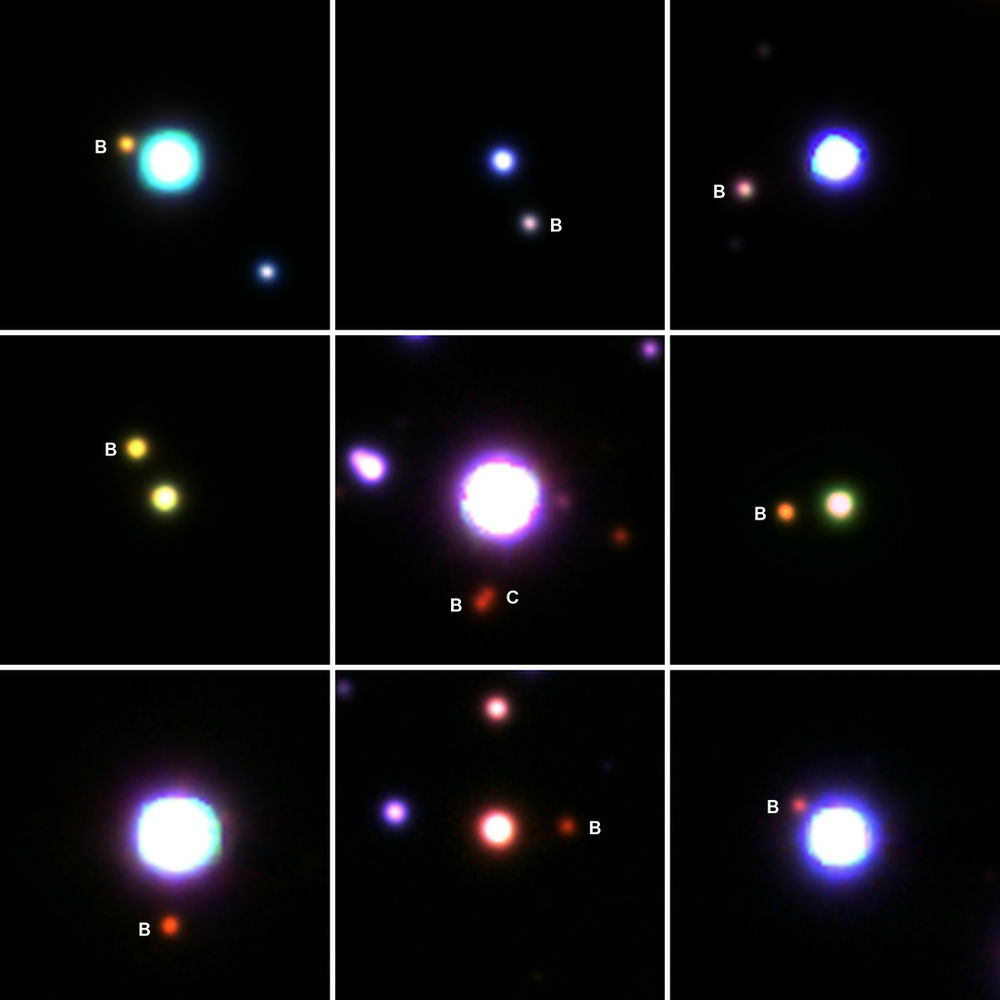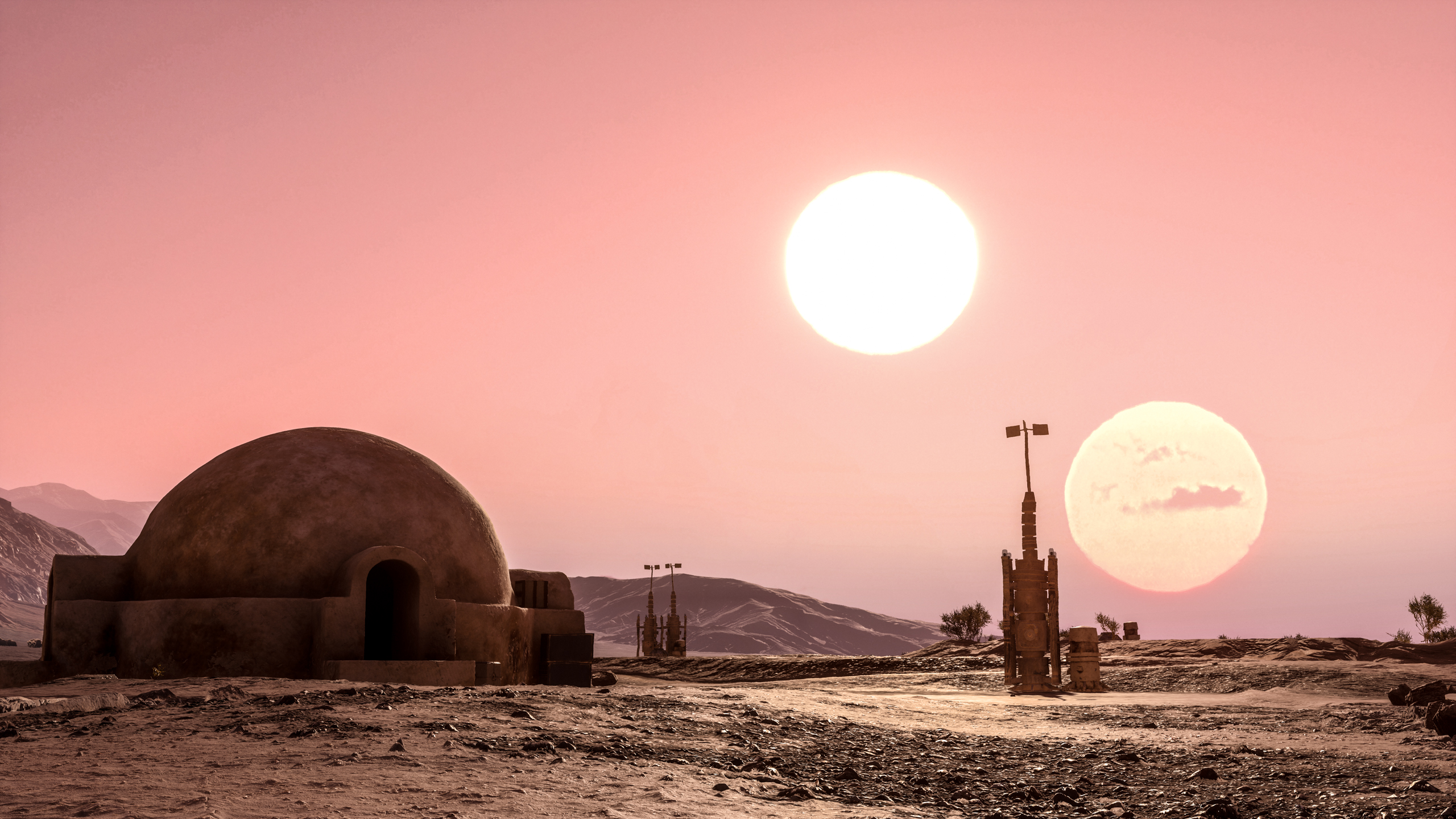These images show some of the exoplanet host stars with companion stars (B, C) that were found during the project. The images are RGB composite images taken with the Panoramic Survey Telescope and Rapid Response System (PanSTARRS) in the y- (960 nm), i- (760 nm), and g-band (480 nm). The image in the middle shows a hierarchical triple star system. Image: Mugrauer, PanSTARRS

